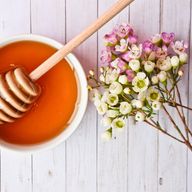
Registered nutritionist and Rowse’s nutrition expert, Lily Soutter, has answered our questions on how to get that good living with Rowse’s new Heather Max Honey.
What is Rowse Heather Max Honey?
Their new Heather Max Honey is British but is mostly sourced from Scotland where heather is abundant. Heather Honey is made by bees collecting nectar from the purple flowers of the heather plant. Heather is commonly found from boglands, heathlands and even moors. In the UK heather flowers from late August to early September. During these months, beehives are transported to the heather where the bees forage on the nectar, for just 3-4 weeks.
How is it different to other honeys?
Rowse’s new British Heather Max Honey is viscous, with a consistency that some would describe as thixotropic, which is almost like a jelly like consistency. It has a lovely dark amber colour, that some would describe as slightly bitter, tangy and mildly sweet. It has a distinctive woody, warm floral aroma that reminds us of that heather plant.
What sets heather honey apart from others in terms of nutrition?
So, what sets Rowse Heather Max Honey apart in terms of its nutrition? Heather honey is rich source of a dietary trace mineral called Manganese. In fact, it contains over 4 times the amount of Mag in comparison to regular honey. There are several requirements for Mag within the body. Firstly, it’s an important component of enzymes, which plays a key role with many bodily processes. For example, these enzymes are involved in protein fat and carbohydrate metabolism, a process that actually converts the food we eat into energy, and it’s through the action of these enzymes that manganese can contribute to normal bone formation and connective tissue function. Lastly, Mag is a component of that enzyme superoxide dismutase, and within the body it has antioxidant properties which may help to fight off oxidative stress which may otherwise lead to disease.
How much Manganese should you be factoring into your diet?
So how much Manganese should we be having within our diets? The nutrient reference value is 2 milligrams per day which can easily be achieved from a balanced, healthy diet. Just one tablespoon or around 21 grams of Heather Honey can provide 15% of your daily target. Other common foods which are also a source of Manganese include the wholegrains, for example wholewheat bread, pasta, flour products. You could consider oats, brown rice, cereal products, nuts and seeds but also dried herbs. So, for example if you’re starting your day with a bowl of porridge oats, topping that with some nuts and seeds and drizzling some Rowse Heather Max Honey on top, you can make a significant contribution to your daily Manganese intake.
What can you use Rowse Heather Max Honey in?
So, what can you use Heather Honey in? Thankfully it’s extremely versatile, so not only can you have it for breakfast, such as on top of your porridge, or in some yoghurt and fruit, but you can have it in your favourite sweet snacks in replacement of maybe a difference sugar source. You could also have it in savoury dishes, so for example it combines very well with things like halloumi, or honey glazed chicken, or even use it in your salad dressings.
What’s your favourite way to use Heather Honey in a recipe?
I have to say my favourite way of using Rowse Heather Max Honey is in my energy balls. They’re cocoa and chia based, and the honey gives them a lovely, sweet flavour, and it helps them to bind, so it removes the need for using a food processor, making the energy balls a lot easier to make. So, if you would like to try Rowse Heather Max Honey, you can pick yours up in Sainsburys, and I hope you enjoy it as much as I do.



